Don't wanna be here? Send us removal request.
Text
How Much Should Web Develop Cost in 2022
There's no denying that a great website can help your company grow. Making great first impressions can help you improve customer retention and drive more sales.
We are all aware that websites are one of the most effective marketing channels available to all businesses. In fact, one is owned by 64% of all small businesses.
So the question is no longer whether you need a website, but rather how much it willweb development cost that meets your business needs.
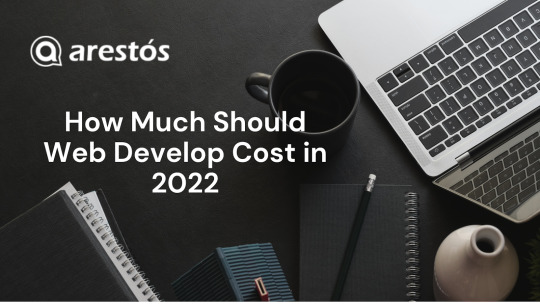
Why is it difficult to estimate the cost of website development?
This is the most frequently asked question we receive from entrepreneurs all over the world: why is calculating the cost of creating a website so difficult?
You can find ballpark figures on the Internet, but these estimates ultimately fail to grasp all of the concepts of creating a website, as well as the complexities of such an endeavor.
So, why is it so difficult to estimate the web development cost ? Consider the following analogy.
Assume you're building your dream home and you're wondering, "How much does it cost to build a house?" The cost will vary depending on the type of house, neighborhood, layout, total floor area, number of rooms, outdoor space, interior and exterior finish, and other factors. The same is true for web design.
So, how much will website development cost in 2022? The answer will be determined by a variety of factors.
But don't worry, we've made it simple to estimate the cost of developing a website. In this article, we will go over various factors that you will need to estimate properly.
Before we begin, consider some baseline statistics that estimate the average website development cost in Hong Kong.
Estimates for How Much Does It Cost to Build a Website
According to research, the average cost of developing a website ranges between $1,000 (for a small business website) and $95,000 or more (for a complex custom website).
In terms of total cost, building a website for a small business could cost less than $1,000 or more than $10,000. (Source)
Depending on your needs, you may need to spend between $100 and $500 to create a typical website. A custom feature-rich website can cost up to $30,000 or more (Source)
A website can cost anywhere between $2,500 and $95,000 to build. You may have to spend money to create a complex custom website.
To create a site, the upfront cost, which includes launching and designing it, is $12,000 to $150,000, while routine website maintenance ranges from $35 to $5000 per month—or $400 to $60,000 per year. (Source)
Based on the above data, it is clear that there are various factors that influence the final cost of website development. Let's see some of the factors that affect the actual website development cost.
Conclusion
Are you ready to build a high-performing website for your business? With our website cost calculator, you can get a free estimate for designing and launching your site. You can also talk to us by contacting us online or calling Arestos at +852 3796 0101.
Arestós: We are a dedicated group of business-minded consultants and technicians. Our primary focus is on developing comprehensive solutions that combine business operations consulting with full ERP and IT services.
OFFICE
701, 48 Kwai Cheong Road, Kwai Chung, N.T, Hong Kong
0 notes
Text
Best e-commerce web design - Arestos
When it comes to being available online, providing your customers with an easy way to purchase your product online can be a valuable way to differentiate your business from the competition. E-commerce When used correctly, E-commerce Web Design can be extremely valuable and rewarding for your business. As a result, ensure that the location where customers can learn more about you and buy your product represents your company professionally.
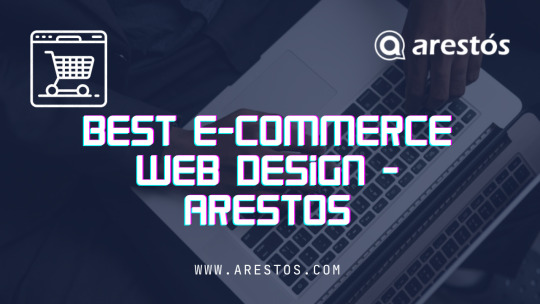
Increase your customer base
You gain access to a larger customer base by creating an e-commerce website. You can reach more people and gain more customers by making your business more accessible. It allows your company to diversify and expand into new markets.
Open for business 24/7
Customers expect excellence when it comes to online shopping. Check to see if the website they visit exceeds all expectations in terms of functionality, usability, and security. Your business is also open and accessible to customers 24 hours a day, seven days a week with an e-commerce website.
Tailored to your business
Average will not do in the world of e-commerce. We make certain that you receive a personalized e-commerce website that meets all of your business requirements. The website will be tailored to your company's needs in every way.
Full functionality and support
We will handle everything from payment gateway setup to product addition. We collaborate with our clients to ensure they receive a fully functional website that exceeds their expectations. Our staff is also always available to answer questions or provide technical assistance. You can also manage your own website by logging into the backend; adding/editing products and tracking orders has never been simpler.
Arestós: We are a dedicated group of business-minded consultants and technicians. Our primary focus is on developing comprehensive solutions that combine business operations consulting with full ERP and IT services.
CALL US
Hong Kong: +852 3796 0101
United Kingdom: +44 3300 108 988
Australia: +61 283 192 282
EMAIL US: [email protected]
OFFICE
701, 48 Kwai Cheong Road, Kwai Chung, N.T, Hong Kong
0 notes
Text
The Importance of User Experience Strategy - Arestos
As the role of UX designers expands, it is more important than ever for designers to have well-defined goals and guidelines for the projects on which they are working. This is where user experience strategy comes into play. This article will explain what a UX strategy is, why it is important, and how to develop one.

What is a UX strategy?
A UX strategy is a detailed plan for keeping a user's experience with a brand in line with the company's overall goals and objectives. UX strategy can assist an organization in making their vision of what they want their customers to experience a reality while staying within predetermined company guidelines.
A good UX strategy includes several key components. The following are some key components of a UX strategy:
A clear vision of what you want your user experience to be.
A thorough understanding of your user's behaviors, expectations, and needs gained through extensive qualitative and quantitative user research.
Trends in similar industries, as well as what your competitors are doing
A thorough understanding of how the company or product is currently performing in comparison to where it should be.
A plan for what tasks must be completed in order to meet these goals, as well as a set of agreed-upon metrics to measure your success.
All in all, UX strategy is a holistic, user-centered business plan that outlines what a brand’s user experience is at present, what they are aiming for, and how to get there. A UX strategy often spans organizational silos and is most productive when utilized across all departments so each customer touchpoint can be addressed and accounted for.
Why is UX strategy important?
Now that we’ve established what UX strategy is, you might be wondering why it matters. There are lots of reasons crafting a UX strategy is important, but for this article we’ve condensed the value of UX strategy into four main points.
1. UX strategy assists company executives in seeing the value of UX design.
As clients and stakeholders delegate more resources and responsibility to UX designers, the benefits of quality UX design on ROI and product success become abundantly clear. According to the Design Management Institute, design-led companies have 50% more loyal customers, a 41% higher market share, and a 46% higher overall competitive advantage than companies that do not prioritize design in product decisions.
However, some clients may be unsure of what UX designers do or how they can help a company achieve its objectives. Employing a UX strategy lets clients see exactly what their UX team will be working on, how it can be of worth to their company, and save them from having to invest in fixing errors down the road.
Arestós: We are a dedicated group of business-minded consultants and technicians. Our primary focus is on developing comprehensive solutions that combine business operations consulting with full ERP and IT services.
CALL US
Hong Kong: +852 3796 0101
United Kingdom: +44 3300 108 988
Australia: +61 283 192 282
EMAIL US: [email protected]
OFFICE
701, 48 Kwai Cheong Road, Kwai Chung, N.T, Hong Kong
0 notes
Text
Website Navigation and its Significance
web navigation, as name suggests, is a way to showing importance and relevance of pages, content, and information on website. It is way that helps users or visitors to find content that they want to see. It is simply a method of using the internet to navigate pages, content, and information on a website. It can be presented in various ways, such as spider bars, menus in the header or footer, and so on. For effective website navigation, simplicity is critical.
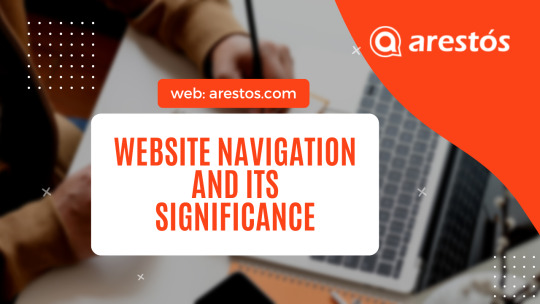
Structure of Website Navigation
Structure of website navigation is very important as it have a greater impact on sales, user experience and SEO (Search Engine Optimization) rankings. It includes not only sketching pages, but also a higher level of abstraction. It is not at all easy to design and organize website. Let us see an example:
In above diagram, about us, events, media, contact, newspaper, etc., are all linked to home menu. To gain access to other pages such as mission, upcoming events, new music, and so on, you must first visit about us, events, media, and so on. Then you can open whatever you want to.
Significance of website Navigation
Website navigation is a simple method for increasing the audience or number of visitors to a website. If website navigation is not good and effective, there is not point of having a creative website because users won’t be able to navigate easily around it to find information they want. So, it’s very important to keep to simple, effective to increase user experience and keep clients and visitors happy. Below are given some reasons that will tell you why website navigation is important. Let’s have a look.
Increase duration of visit:
Website navigation helps people to find information they want to see very easily and effectively. Good website navigation provides clear and simple navigation bars and links that encourages visitors or peoples to explore more and more. This in turn increase duration of their visit on website because navigation is very easy to use and understand and nowadays everyone wants it easy to get things.
Increased chance of sales:
Website navigation generally helps in showing visitors what website is actually about without any wastage of time. This in turn increase time spent by visitors on website and visitors stays on website for longer time. Visitors then go through website and purchase product effortlessly and easily. This will automatically increase purchase of products and sale.
Improved user experience:
Navigation is very important for website because without navigation, websites won’t look good, and appear unorganized. Nowadays, no one to waste their time on determining how website works. Everyone wants to easily find what they want. Good navigation generally helps visitors to find information they want to search and increase speed of visitors search. Clear and simple navigation is simply to understand that in turn increase user experience.
Good Design:
Good navigation make website look attractive, effective and good. Navigation has a greater impact on how website is viewed by users or visitors and how longer they will stay on website. The design of website navigation has a greater impact on website success. It almost affects traffic, SEO ranking, user experience, conversions, sales, etc. So, good navigation is very useful to boost website design and brand of company or business. Good navigation keeps visitors happy and satisfied.
Arestós: We are a dedicated group of business-minded consultants and technicians. Our primary focus is on developing comprehensive solutions that combine business operations consulting with full ERP and IT services.
CALL US
Hong Kong: +852 3796 0101
United Kingdom: +44 3300 108 988
Australia: +61 283 192 282
EMAIL US
OFFICE
701, 48 Kwai Cheong Road,
Kwai Chung, N.T,
Hong Kong
0 notes
Text
8 benefits of automated order processing software
The same idea applies to ecommerce. Automated order processing is beneficial because it reduces human error and makes the entire order management process (from purchase order to picking and shipping) more efficient.
In this article, we will look more closely at automated order processing and how it can help your ecommerce business.

What precisely is automated order processing?
Automated order processing is the use of technology and systems to process orders more quickly by eliminating manual labor. Order processing automation can help reduce human error, improve operational efficiencies, and ultimately accelerate the fulfillment and shipping process.
What is an automated order processing system?
A fully automated order processing system is a system that integrates with an online store, or even multiple sales channels, and automatically processes and verifies orders as they are placed online. From there, the order status is updated in real-time, customers are notified that the order is being processed, and the order fulfillment process can begin.
8 benefits of automated order processing software
1. Automatically captures sales order data processing
An automated order processing system receives and verifies customer orders before entering them directly into a company's order processing or ERP inventory system. This eliminates the need to reenter information such as customer information and delivery location on a regular basis. Historical order data can be used to forecast demand and provide other valuable insights to help businesses make better decisions.
2. Collects customer data
An automated system not only collects sales order data but also customer information. This includes details such as the number of orders, client order history, frequented delivery locations, contact information, and more. Collecting this data helps businesses improve the customer experience, provide better customer service, and make better data-driven decisions.
3. Increases accuracy and reduces errors
Manually entering orders and customer information can result in more human error and inaccuracy. This can lead to problems later in the order management process, such as filling and shipping the incorrect order. Not only does automated processing software speed up the process, but it also helps to reduce human error and improve order accuracy.
4. Streamline order tracking with an order management system
Automated order processing software can be integrated with your inventory management and/or warehouse management system (WMS), providing you with significant data control. This minimizes the risk of human error and data losses, and increases data security. All orders can be tracked from one portal, making it easier to track inventory and order status and updates, all in one place.
5. Decreases order fulfillment costs
Having an automated, fully integrated system to process orders can help you save on fulfillment costs in the long run; It helps to reduce the amount of labor needed to get an order out the door, and the process will be much more efficient by eliminating manual order entry and tracking.
6. Allows for faster shipping times
Order processing tasks like order verification, shipping label creation, and printing can all be automated. Setting up the ability to process orders automatically will help speed up the shipping process if you process hundreds of orders or more monthly. Allows you to process orders from any location.
By tracking orders in real-time from the automated order processing system, your team can process an order from anywhere. Whatever location a customer places an order, it is automatically verified and processed, and order data can be sent to where inventory is stored, such as the fulfillment center location closest to the order's destination.
8. Maintains high customer satisfaction
Customers prefer to know whether or not their order is being processed right away. You can notify customers when an order has been received, processed, prepared, and shipped. Providing order status keeps your customers informed of the status of their orders at each stage, from processing to shipping. As a result, there are fewer customer service emails and happier customers.
In the long run, employing an automated order processing system can also take your ecommerce sales to the next level.
Conclusion
Automating order processing can help streamline the fulfillment and shipping process, increase customer satisfaction, and improve operations.
Arestós: We are a dedicated group of business-minded consultants and technicians. Our primary focus is on developing comprehensive solutions that combine business operations consulting with full ERP and IT services.
- OFFICE: 701, 50 Kwai Cheong Road, Kwai Chung, N.T, Hong Kong, Hong Kong
- Hotline: 852 3796 0101
0 notes
Text
Why Is Web Design Important?
As you look into redesigning your website, you may wonder the importance to website design. How does it impact your audience and your business? Let’s look at five reasons website design is important.
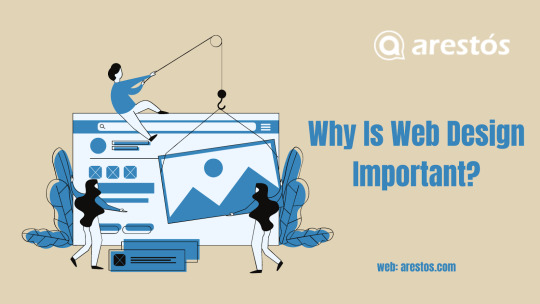
1. It sets the first impression
When your target audience visits your website, it forms their first impression of your company. They will make an instant decision about your company. You want to make a good impression on your audience in the first few seconds.
If your website appears unappealing or outdated, your audience will form an immediate negative opinion of your company. They will be turned off by your website if they do not find it appealing. You'll lose leads because they'll leave your page for one of your competitors'.
Web design is significant because it influences how your target audience perceives your brand. The impression you make on them will determine whether they stay on your page and learn about your business or leave and go to a competitor. A good
2. It aids your search engine optimization (SEO) strategy
Many web design elements and practices have an impact on how you publish content on your website, which in turn has an impact on how search engine spiders crawl and index your website.
You cannot afford to make a mistake here. If your on-page SEO fundamentals are lacking, you will face an uphill battle for visibility from the start.
Aside from how content is published on your website, certain web design elements can have a direct impact on SEO. If you're unfamiliar with how web design works, it can be difficult to understand, but to put it simply, your code must be SEO-friendly.
The best way to ensure proper web design practices (and subsequent search engine visibility) is to collaborate with a web design firm.
3. It sets the impression for customer service
People can judge how you will treat them by looking at your website. Your design gives them insight as to how you view your audience. If you don’t put any effort into your website’s design, your audience knows that you won’t put effort into helping them.
Your website is like a customer service representative. If your website is bright, modern, and inviting, your audience will feel more welcome on your page. You’ll give the impression that you are open and welcoming to new people who visit your website.
On the other hand, an outdated and unappealing site makes your business appear cold and aloof. People don’t want to check out a business that doesn’t value them enough to make a good first impression.
Think of your web design as the digital face of your business. If someone walked into your physical location, wouldn’t you want a friendly face to greet them and make them feel welcome? An updated and modern web design is the equivalent to a friendly face greeting your new visitors.
4. It builds trust with your audience
People don’t trust poorly designed websites. If they see your poor design or the information looks outdated, they won’t trust your site. They may view your site as seedy or shady because you don’t have an updated web design.
Think about a person looking to place a bulk order with a manufacturing company. They’re spending a tremendous amount of money, which means if your manufacturing website design doesn’t convey trust, they’ll find another business to fulfill their order.
On the other hand, a professional site signals trust with your audience. They will trust your business and feel comfortable checking it out further.
It’s important to build trust with your audience so they remain on your site. When visitors remain on your site longer, you create more opportunities for your business to capture those leads.
5. Your competitors are doing it
If you need a reason for why web design is important, here’s a big one: Your competitors are already utilizing web design. If you want to remain in competition with them, you must use web design for your site.
You want your website to stand out from the competition. If you have an old, outdated, and low-quality website, your competitor’s will outrank you. Their well-designed website will perform better than your website.
This means you’ll lose leads to your competitors. They’ll attract more leads to their page because their page is more appealing.
Your website’s design is an opportunity for you to set your business apart from the competition. When you’re competing with other businesses, you generally have the same services and similar pricing. You need that one thing that will make your business stand out from the rest.
6. It creates consistency
You want to build your brand when you're trying to get new leads for your business. You want your audience to become acquainted with your brand so that they will choose you when the time comes to convert. Online web designs are important because they contribute to page consistency.
Every page on your website should use the same fonts, styles, and layouts. If you have a different design on each page, your site will appear unprofessional. It also makes building brand recognition more difficult because your audience won't know which colors to associate with your brand.
People will leave your website in favor of one that appears more professional if it is inconsistent. By establishing consistency, you can maintain
If you need help creating your dream website, call us today at +852 3796 0101 to speak with a strategist.
Arestos OFFICE
701, 48 Kwai Cheong Road,
Kwai Chung, N.T,
Hong Kong
0 notes
Text
Top 3 eCommerce Payment Gateways to Simplify Payments
If you ask me which are the best eCommerce payment gateway for 2022, I can easily respond. That, however, will not be enjoyable!
Do you remember the fantastic, never-to-happen future promised in our bedtime science fiction stories? It's time to keep an eye out for them because they seem to be appearing slowly and steadily. For example, eCommerce websites have become the new normal profit-generating business, IoT mobile app development has taken hold like a Jetson-esque phase, several machines have gradually rendered previously staple jobs obsolete, and so on.
In fact, it might quite interest you to know that those businesses that didn’t even have a website before 2022 are now seen dreaming big in the online space. However, whatever era you reside in whether it’s before digital transformation or after, the end-users will always prefer convenience over anything. It’s the deal-breaker! And nothing seems to be more relieving than buying stuff without much hassle.
In this article, let’s take a look at the top 7 best eCommerce payment gateways to improve your customers’ shopping experience.

The importance of eCommerce payment gateways
With the advancement of technology, it is critical to contact an eCommerce developer who not only provides a solution with convenience and security, but also the ability for seamless transactions and delivery to their doorstep.
In short, what makes your eCommerce website a cut above?
Wide range of products to choose from
Quick Checkout
Easy navigation across the platform
Easy accessibility
Instantaneous cashless payment
Best eCommerce payment gateways for your site
PayPal
Paypal is probably something we've used before. After all, the brand speaks for itself and doesn't need my explanation. However, I would still recommend it because it combines ease of use, dependability, and security.
In 2019, there are 277 million active PayPal users worldwide, according to Statista. This figure is up from 237 million at the start of 2018.
PayPal is one of the eCommerce payment gateways that many eCommerce platforms, such as WooCommerce, Shopify, and BigCommerce, trust.
Its main characteristics are as follows:
International Payment/Credit card Support
Multi-currency support
Withdrawal fees
Settlement Days
Customer Support
Secured Documentation
Mobile App Payment Gateway Integration: iOS and Android
Square
If you are looking for an eCommerce payment gateway system that has the ability to get paid fast, prevent fraud with straightforward pricing, look no further than Square. Being a POS system that mainly focuses on in-person payments this one undoubtedly carries the best eCommerce options for your website.
Imagine a physical credit card swipe attached to your phone, this is what square is all about. It doesn’t matter whether you own a large business or a small one, the eCommerce payment gateway works best for those who need a method of credit card processing, particularly for in-person transactions.
What makes this one a cut above? Well, digital space is a new concept but some businesses still have a physical retail location. Square’s POS system acts as a great option if you have or planning for a retail location in addition to your eCommerce store.
Plus, there is no monthly fee. Just like Stripe and PayPal, Square only charge you 2.9% + $0.30 per transaction.
Stripe can integrate with a great number of eCommerce platform. From Wix to WooCommerce, GoCentral online store, Ecwid, 3DCart, OpenCart, Magento, Miva, Drupal Commerce, X-Cart, Zen Cart, ShipStation, Mercato, Unbound Commerce, WordPress, nopCommerce, WP EasyCart, Sociavore, the payment gateway supports them all!
Payline
The next entry on the list is a true classic. This one, like others, provides a smooth and hassle-free payment experience. But what makes it worthwhile to consider is how it eliminates complexities when dealing with a payment provider.
Among its intriguing offerings are gateway payment processing and a solution with relevant integration with over 175 online shopping carts. They also agree with the idea of accepting payments through mobile apps. The Payline payment processing gateway, in general, integrates with QuickBooks for easier payroll management and business financials.
Some of its favorable features include:
Payline Connect – built-in security and fraud protection
Subscription billing – Mainly recommended for businesses that offer memberships, products, and services regularly.
ACH Payments: Here payments are being well-optimized, lowering your costs. Transactions have become faster and more convenient.
No wonder the significance of digital wallets seems to be gaining momentum at a fanatic pace. It’s high time one must realize that all your customers aren’t the same and so could be their payment preferences.
arestos
0 notes
Text
Why Should You Use WooCommerce?
Want to start an ecommerce business? Take a look at woocomerce.
Every year, thousands of new ecommerce businesses are launched. When it comes to selecting a platform for new online retailers, there is no shortage of options. Should you go with a hosted platform, such as Shopify, or a self-hosted application, such as Magento or WooCommerce? Should you go with the simplest solution or one that can grow with your company?
WooCommerce, which is used on approximately 2.3 million ecommerce stores worldwide, is especially friendly to new ecommerce merchants because it combines ease of use with incredible power, flexibility, and features.
What is WooCommerce?
First, what is WooCommerce? WooCommerce is an ecommerce plugin for WordPress. It makes creating and managing an online store simple, with reasonable levels of flexibility and several vital features such as inventory and tax management, secure payments, and shipping integration.
Why Choose WooCommerce?
Among the many eCommerce plugins you can use for free, WooCommerce in WordPress is considered to be at the top of the list. Here’s why:
Built for WordPress. It allows seamless integration with WordPress, and you can also connect with millions of WordPress users.
Scalable with your needs. Small or large, few or many, WooCommerce can ride the wave with you.
Ensure security. WooCommerce protects your data from falling into the hands of any third-party platform. It also secures the transactions between consumers and you.
Audited by Sucuri. This ensures that WooCommerce sticks to the coding standards and best practices of WordPress.
A vast and ever-growing global community. There are more than 350 contributors and over 5 million WooCommerce installations up to this date.
Well-documented. WooCommerce provides comprehensive documentation and guides that cover a broad range of topics like setup, SSL, theming, snippets, and so on.
An array of free and paid extensions. The most defining benefit of WooCommerce is a large number of free and paid extensions. They allow you to customize your WooCommerce website with a wide range of features and integrations.
Conclusion
WooCommerce is undoubtedly a great tool to turn WordPress into a fully-featured eCommerce online store.
Arestós are an ERP Consulting & Software Developer providing complete digital business solutions including corporate web design, online store development, and custom business management software. We are dedicated to helping businesses solve their challenges and unleash their potential by bespoke and robust digital solutions.
0 notes
Text
10 Excellent Web Navigation Design Examples
web navigation has become an important component in UX because it can either help or hinder your users' engagement with your site. It's similar to the foundation of your house. If a foundation plan fails, your building is at risk of collapsing.
There are no set directions or how-for to's organizing navigation because it varies so much between websites. In Arestos Case Studies, you can learn more about Website Navigation Design.
I'd like to share my thoughts on the concept of navigation in web design. I'll show you a few easy ways to improve the navigation and usability of your website. In addition, there will be some trends and 10 creative navigation menu design examples to help you plan your design.
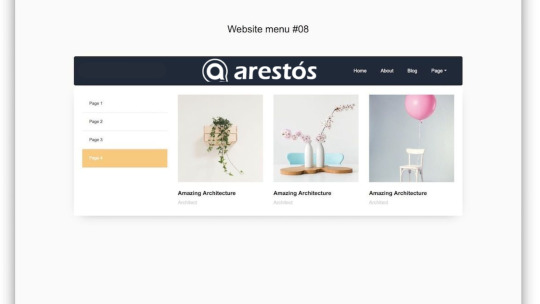
What exactly is navigation?
The term "navigation" can be interpreted in several ways. In general, it is a focal point of your website that allows your users to find what they are looking for without needless clicks. It is a method of directing users to the most important information on your website.
Which questions should you ask yourself to help you plan a navigation scheme?
What is your intended audience's goal for visiting your website?
What information and functional modules will be available on the website?
How do I organize the information for users in the order of importance?
How will the functional or information modules be organized in the tree-view structure?
Let me introduce 10 website navigation design best practices
1. Atterley: This website attracts user’s attention with its product, which is why the design of the navigation bar is plain.
2. ANGELIA AMI: Push the left menu icon and the main menu moves to the center of the page
3. WE3: The website designed in actable mode. Every time you scroll down the website, new information appears
4. Fairchild: Left sidebar navigation that expands from a menu icon is similar to what you see on mobile sites. The nav is easy to find in the upper left hand corner of the main landing section.
5. Kennedy Center: JFK Center you can use in two types of ways: dragging the pictures or just using horizontal menu down the page.
6. Novotel: You can play with this website. Use navigation to give some tasks to a person who is waiting for you.
7. Adriatic Luxury Hotels: Here you can easily orient scrolling down the site or using a sticky menu to choose what you are looking for.
8. Kalios: Kalios navigation placed top left. After you press the menu icon, you choose the products you want to buy just by hovering over the icon.
9. Okeanelzy: Here you control your moving with arrows. The user can walk around the site like in a house. In every room just scroll down to find the information.
10. Australian Ballet: Type: sticky, responsive, mega drop-down.
Conclusion
There are plenty of navigation types you can implement on your website. There is no single way of creating the perfect site nav. Everything depends on your needs and your customer’s needs. All these examples are just a small drop in the ocean. Hope you’ve found inspiration. Arestos can help you to realize all your most bravest navigation menu design ideas.
0 notes
Text
These are the top 7 steps in the web design process.
Most people believe that website development is a stressful process that is best left to professionals. Do you have the same opinion? If so, this article is for you. Having a solid web design process is not an easy task. However, if you follow a clear and step-by-step guide, you can easily produce amazing results and design your website like a pro!
A proper web design will solve a variety of problems. For example, it will help people understand the product/service, create more emotional bonds, and increase interactions, among other things. Well! The success of web page design is entirely dependent on how elements such as color, font, texture, and so on are combined. As a result, it is critical to have a thorough understanding of each.
Need not fret! You are in the right place. Here are seven steps that will help you create a fantastic web design process without putting much effort and time.
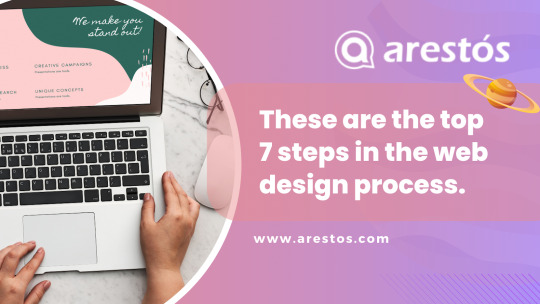
Step 1- Identify your goal
Creating a creative brief is the first step in effortlessly crafting an appealing design process. If the designer has a clear vision of the end result, it will be easier for them to express their ideas and choose appealing web design colors that will immediately strike the viewer's mind.
After you've answered all of these questions, you can easily move on to the next step in the web page design process. The detailed information will point you in the right direction throughout the process.
Step 2- Determine the scope of your project
Project definition One of the most difficult steps in the website design process is determining the scope. It is not always easy to understand the scope, expectations, and resources. It keeps on changing during the process, which might affect the quality of your project and might lead to more work.
Working on a project with an entirely unrealistic image is not at all expected. Defining the scope of your project, such as the timeline, total number of web pages, features you want in your website, and so on, will help you achieve your website goals without any hassle.
Step 3- Design your website
Once you've decided on a direction, it's time to create a sitemap and wireframe. It will provide you with an idea of how your website design will look. Well! It is the stage at which you can explain the relationship between all of the website pages and make changes based on the desired outcomes.
Making a website without a sitemap is akin to making a cake without utensils. So, now that you've finished your wireframe, it's time to do some research and brainstorming. Designing a website will not only help you understand the essential elements, but it will also allow you to easily design a website based on your website.
Remember, the more you research, the better you design. Thus, get ready to create the draft design to make your website highly appealing and useful.
Step 4- Content Creation
Have you completed the development of a website framework? Begin by laying the groundwork for your web design process. It is, indeed, the website content.
If the frontend of your website is interesting, you can easily capture the attention of the visitor. You can easily retain customers and inspire them to make a purchase if your content is strong and appealing. When it comes to 2020 web design trends, content is something that can add value to your website design.
Aside from increasing engagement, website content improves site visibility for SEO. So, if you want your design process to run smoothly and effectively, never ignore the content.
Step 5- Visualize the content
Statistics show that 91% of people prefer visual content to long, boring written content. Now that you understand the significance of visual content, it's time to design your website's visual style.
Adding unexpected visuals to your website will add an extra effect to your site. Make sure your website's visuals are eye-catching, as this will make it appear more professional and simple. Aside from that, visuals will enhance your text. As a result, make sure that all of the images on your website are both responsive and appealing.
Step 6- Develop the website
Finally, it's time to put your technical skills to use and build an awesome website. Well! This step is simple because it combines all of the previous steps. Because there are thousands of websites available online, it is critical to develop a website that is error-free in order to rank high on Google.
While coding is always an option for building websites, if you are not a technical person, you can always use visual page builders, simple themes, and templates to create customized sites without investing a lot of time and money.
Once you've created a website, make sure to solicit feedback and make necessary changes.
Step 7- Launch the website
When you're happy with your website design, it's time to go live. Choosing a scalable and quick managed hosting platform can help your website succeed. However, never expect your first attempt to attract visitors and generate revenue. There are always some things that need to be changed.
One of the most important things to remember after launching your website is that you can continue to test it, add new content, elements, and update the message to make it better and more productive.
In a Nutshell
Well! Designing and developing a perfect website is not everyone's cup of tea. However, if you follow the above steps carefully, you can surely make the entire web design process a lot more smoother.
Still, if you feel that you want some technical expertise, you can always get in touch with Arestos web design company that offers excellent web design services at an affordable cost. Whether you are looking for a responsive web design or an ecommerce website, you can always take help from the experts!
0 notes
Text
What is web design - and how do I get it right?
Isn't a website just a website? Wrong. A website that is out of date, confusing, or broken will harm your brand. We're not saying it will harm your brand; we're saying it will.
So, how can you position yourself for success? You can create an awesome website if you nail your web design from the start. But what exactly is web design? Continue reading if you want to understand what web design is all about, why it is so important, and how to get it right.

What is web design?
Web design is responsible for the overall look and feel of a website. It is the process of designing and developing the elements of your website, such as structure and layout, as well as images, colors, fonts, and graphics.
Graphic design, user experience design, interface design, search engine optimization (SEO), and content creation are all components of web design that work together to create the finished experience of a website. These elements determine how a website appears, feels, and functions on different devices. If you want to learn more about how to build a website, check out this comprehensive guide.
Web design is different from web development, which is the actual coding that makes a website work. When you’re building a website, you need both web design and web development. Although you can find web designers who are also web and UX developers, these are distinct skill sets.
Web designers take your ideas and create a mockup of what your future website will look like. Web designers are in charge of the creative aspect of designing a website.
Web developers, also known as engineers or coders, take the mockup created by your web designer and translate it into a coding language that can be displayed on the web. They make websites work, which frequently entails custom-coding widgets and other tools.
A user experience developer (UX developer) is the person who makes your website user-friendly. They have both technical and design skills and use them to create websites that attract and retain visitors.
Why is web design important?
First impressions are extremely important. We can't emphasize this enough: if you don't have a strong web presence, you're holding back your brand.
Prospective customers who search the web for your brand and come up empty-handed may believe you've gone out of business. If they search and find something subpar, they'll believe you don't care about your company or product. By getting your web design right, you can ensure that every relationship that begins on your website is a great one.
Now that you know what's what and who's who, let's take a look at some tell-tale signs of great web design and what differentiates it from less-than-great web design.
What does good web design look like?
A good web design is objective. In other types of design, such as illustration or sticker design, much of what constitutes "good" is subjective to the viewer's preferences. The distinction between "good" and "bad" web design is much clearer. A well-designed website is one that perfectly creates the experience that your visitor seeks.
A website that works is a website that converts. In webspeak, "convert" refers to convincing a user to take a specific action. A conversion occurs when a user completes an action that your website instructed them to take. Conversions can include anything from signing up for a newsletter to making a purchase, opening an account, or accessing additional content on the website.
Effective web design brings a few different elements together to promote conversions. These include:
Compelling use of negative space
Clearly presented choices for the user (the fewer choices the user has, the less likely they are to become overwhelmed and confused)
Obvious, clear calls to action
Limited distractions and a well thought out user journey (ie. using only images and text that are 100% relevant to the subject on the page, featuring only buttons that lead to desired actions and using font variations for emphasis and calls to action, not just for the sake of featuring different fonts)
Responsive design (a design that resizes and reorients itself to the user’s screen, making the website easy to use on any device: phone, tablet, laptop or desktop browser.
Appropriately sized fonts that follow a hierarchy (see “Limited distractions”)
Relevant, high-quality content and images that hook your readers’ attention
A balance between the amount of text and images on each page (too much text can overwhelm a visitor, too little text can be equally disengaging)
Think again if you don't believe that aesthetic design choices affect conversions. Your website must be appealing, especially to your prospective users, so consider what style will appeal to them.
Spend money on eye-catching images that complement your brand. Avoid using obvious stock photography. Learn more about using stock images by clicking here.
It is critical to stay true to your brand when designing a website. Even the most beautiful website is useless if it does not reflect your brand.
Other building blocks of an effective web design are:
Buttons
Fonts
Color palette
The visual balance between your images and copy on each page
Of course, good web design isn’t just utilitarian. Visitors like websites that are engaging and fit the brands’ aesthetics. No matter how you achieve it, meshing an on-brand, engaging look with design elements that convert is how you win at web design.
Web design: what doesn’t work
We've discussed what constitutes good design. Let's take a look at what it isn't.
In general, visitors should not have to do anything to use your website. The entire experience of using your website should be simple and intuitive.
Here are a couple of examples: Calls to action that are clear are great web design; murky ones are bad web design. High contrast fonts are good web design; low contrast fonts that are difficult to read are bad web design.
Here are a few other elements to avoid:
Distracting images and backgrounds. As a general rule, stay away from tiled backgrounds. Though there are a few select instances where a tiled background could be a good choice, in most cases they’re distracting.
Non-responsive design. Nowadays your website simply needs to be mobile responsive.
Unclear links and buttons. Visitors shouldn’t have to hunt for links and buttons, they should be able to quickly see which images and pieces of text will take them to new pages or confirm their choices. Similarly, users should be able to clearly recognize fillable fields.
Generic or irrelevant stock photos and filler text without valuable information.
Grid layouts, for example, are not inherently good or bad choices in web design. They can be used in both effective and ineffective ways, so they must be used correctly.
Animation is another difficult web design element. You shouldn't have a comet tail trailing the user's cursor or force them to scroll past a row of dancing hamsters to get to your content in 2019. But how about an animated exit pop-up that draws visitors back to your site and encourages them to convert?
Arestos - We are a team of dedicated and business-oriented consultants and technicians. Our focus is building complete solutions combining business operation consultancy and full ERP and IT services.
0 notes
Text
5 Web Design Tips for a Great Site
A clean, user-friendly website is essential for any type of business. Your business website not only serves as the digital home base for your company and product line, but it also anchors your entire digital marketing strategy, providing a central hub for customers to point toward and connect with your brand and business. A poor website experience can stymie those efforts and cut off those connections before they even begin.
Here are five web design tips to help you turn your site into a customer conversion dynamo in 2022 - Arestos

Create your website to make a good first impression.
First impressions remain at the top of the list of useful web design tips. This is due to the fact that what users interact with immediately after loading your site sets the tone for the entire experience. And if your web design fails to deliver in those critical first seconds, you're not only losing new visitors, but also opportunities to build a strong and positive brand memory that generates interest and sales down the road.
The truth is that many factors influence those critical first impressions, and working with web designers who understand those factors is critical to developing an appealing professional website. Structure, colors, and spacing are often important visual elements in website design appeal. Simultaneously, seemingly insignificant features such as text layout and even the fonts you use have a significant impact on on-site experience and engagement.
Having a web designer with an eye for these details and their proper place in the visual hierarchy not only results in a more visually stunning website, but it can also help turn more chance visits into extended stays, providing users the eye-catching web pages and experience they need to stick around and buy from your business.
To build a successful website that pops from the get-go, it's important to focus on: Simplicity, Familiarity, Accuracy.
Make each page mobile-friendly.
You can't make a list of web design tips these days without including mobile optimization near the top. Why? Because mobile is important in 2022. Indeed, nearly 80% of people say they are more likely to return to your site or share it with others if it is mobile-friendly. If your web designer isn't focused on creating a good, mobile-friendly website, your company is passing up an easy opportunity to generate repeat visits and spread the word about your brand.
Consumers are increasingly using mobile devices to search for and research businesses on the internet. If your web pages aren't loading properly, or if your web design isn't making that mobile experience seamless, potential customers will likely abandon your site and your company in favor of others in your space. Over time, those mobile issues compound, posing a growing threat to your brand, reputation, and bottom line while making it exponentially more difficult to attract new business.
That being said, prioritizing mobile navigability and layout in your web design approach is critical. From the beginning, it's critical to look at each visual element, logo, block of text, social media icons, and call to action buttons through the lens of mobile, ensuring that every feature and aspect of your design process is mobile-friendly and designed to deliver a next-level experience.
This can range from using only essential visual cues (logos, menus, CTAs, and buttons) throughout your mobile site to emphasizing eye-catching fonts, making your text and service pages more scannable, and resizing page elements for easier user interaction.
Increase your load times.
A slow website can quickly become your worst enemy, making it difficult to retain prospects and move them closer to the point of purchase. Whether you like it or not, today's savvy, seasoned site visitors expect websites to load quickly, and if your homepage or blogs don't appear quickly, they'll likely go elsewhere to find what they're looking for.
In other words, the loading time of a website is an important, if not critical, component of any practical and responsive design effort. It has a lasting impact on the visitor experience and, ultimately, your conversion rate. Understanding how quickly your pages load and how to optimize those loading times isn't just another website design tip to ignore. It's a critical part of the web designer's job, and should always be a top priority when building a site design that shines.
Fortunately, web designers have a variety of methods at their disposal for speeding up your website. Some of the simplest ways your web designer can improve load times and outperform your competitor's site are as follows: Image resizing, site plugin management, and regular speed testing.
Don't forget the SEO
Online visibility is critical not only for making your website easy to find, but also for getting it in front of customers when they need it the most. By incorporating SEO into your web design strategy, you can give it the boost it needs to shine in search engines and generate the user engagement rates that keep it at the top.
Understandably, there is frequently a schism between the worlds of web design and SEO, with many a web designer relegating SEO to the realms of digital marketing and content generation, and vice versa. However, there are numerous things that designers can do right away to provide a significant visibility boost.
Using basic SEO principles in things like headline creation, image captioning, subhead creation, and even URL design can often add up, strengthening the site's ranking signals and search potential right away. Knowing how to break up text and where to incorporate interactive elements into content and page structure can also be a simple but effective way to optimize search readiness from the start.
Whether you're working with experienced, skilled designers or first-time site builders, ignoring SEO in the web design process is risky.
Focus on the personalized user experience
It is critical to create a web design that appeals to the broadest possible audience. However, it is the ability to provide personalized shopping experiences that truly distinguishes good web design. Incorporating shopper personalization techniques into and across your own site design is how you go above and beyond the standard digital marketing approach to make a genuine connection, providing users with tailored, relevant content and experiences that boost sentiment and compels action.
Working shopper personalization into your web design strategy might seem daunting at first, particularly with so many other design tips out there and so many elements to worry about across the visual hierarchy.
Fortunately, there are a few relatively simple ways to incorporate personalization into your web design strategy, ranging from baking tailored, behavior-based product recommendations into your design infrastructure to incorporating dynamic, hyper-relevant CTAs into each new site visit. Providing targeted photos and interactive features can also be an excellent way to optimize your design for personalization.
0 notes
Text
What Is the Role of a Business Intelligence Analyst? Making Business Decisions Based on Data
Data is used by Business intelligence analysts to assist businesses in making decisions. There are several paths you can take to become one once you have the necessary skills.

What is the role of a business intelligence analyst?
A business intelligence analyst (BI analyst) uses data and other information to assist organizations in making sound business decisions.
Though exact job descriptions vary, a business intelligence analyst's role can be divided into three categories:
Breaking down key business data: A business intelligence analyst may collect, clean, and analyze data such as a company's revenue, sales, market information, or customer engagement metrics. BI analysts may also be asked to create tools and data models to aid in the visualization or monitoring of data.
Data interpretation: Finding patterns or areas in data that indicate a potential for improvement in business practices is an important part of the job of a BI analyst. A BI analyst, for example, might examine market trends to determine how a company's product should be modified.
Sharing findings can range from visualizing data in graphs and charts to putting together reports and presenting them in front of other teams or clients. Based on their findings, business intelligence analysts will make recommendations to improve or grow the business.
Business intelligence analysts can begin their careers in analytical roles such as data analysts. They can advance to become business intelligence consultants, architects, managers, or other senior positions.
What is the process of becoming a business intelligence analyst?
Here are the skills that a typical BI analyst possesses, as well as the paths you can take to acquire them.
Working with data will be an important part of your job. It is critical to understand how to manage data using common data tools such as Excel and SQL. Knowledge of data analysis tools that provide machine learning solutions is also becoming increasingly valuable among BI analysts.
Data visualization: Knowledge of services such as Tableau and Power BI is frequently mentioned in job descriptions as essential. These tools aid in the creation of graphs and other data visualizations.
Coding languages: As a BI analyst, you may be asked to develop systems or processes to aid in data analysis and monitoring key business aspects. Coding languages such as Python, Java, and R are frequently sought after in job postings.
Financial and business knowledge: Understanding business practices and finance is essential for providing insights on how to improve the business.
Communication: A business intelligence analyst frequently speaks in front of groups or writes reports to share findings. Having the ability to synthesize research and recommendations through written and verbal communication skills is frequently required.
How to Become a Business Intelligence Analyst
There are several ways to become a business intelligence analyst.
Professional diplomas or online courses: A professional certificate or course is an excellent way to develop necessary skills such as data analysis or familiarity with Power BI. Certificates or online courses, which often require no prior related experience, can provide the flexibility needed to learn a new field while not disrupting your life. On Coursera, the University of Colorado offers a Data Warehouse Business Intelligence Specialization that will teach you the fundamentals of business intelligence analysis.
If you have two or more years of experience in computer information systems, data modeling, systems analysis, or a related field, you can also become a Certified Business Intelligence Professional (CBIP).
Bachelor's degrees can provide you with both the technical and critical thinking skills required of a BI analyst. Concentrate your studies on a quantitative subject such as finance, mathematics, or data science.
Master's degrees: A master's degree can help you advance your career as a business intelligence analyst by building on your previous experience and education. It's a good idea to consider your previous experience when deciding on a field for your master's degree.
If you've been in business for a while and need a stronger background in data, a master's degree in data science may be right for you. If you have a strong understanding of data analysis but want to improve your business understanding, an MBA program with a focus on business analytics could be for you.
Arestos The one-stop digital solution to satisfy all your business needs.
OFFICE: 701, 48 Kwai Cheong Road, Kwai Chung, N.T, Hong Kong
CALL US: Hong Kong: +852 3796 0101
United Kingdom: +44 3300 108 988
Australia: +61 283 192 282
0 notes
Text
5 Business Intelligence Tools You Should Be Aware Of
Individuals pursuing careers in business intelligence (BI) must be familiar with specific software tools, just as a handyman requires a toolbox stocked with hammers, nails, and screwdrivers. The functions, strategies, and tools that businesses use to collect, process, and analyze data are referred to as business intelligence.
Based on the insights discovered, business intelligence tools can identify new opportunities for businesses to improve return on investment (ROI) and competitive advantage. Consider using one of these tools to advance your career. They are used across all departments, industries, and business users.
Here are five of the most commonly used BI tools and their benefits.

What is the definition of a business intelligence (BI) tool?
Large amounts of structured and unstructured data from both internal and external systems are collected, processed, and analyzed by business intelligence tools. Documents, images, emails, videos, journals, books, social media posts, files, and other media may be used as data sources. BI tools find this information using queries, which can then be presented in user-friendly formats like reports, dashboards, charts, and graphs.
Data mining, data visualization, performance management, analytics, reporting, text mining, predictive analytics, and other functions are possible with the tools. As a result, employees can use this data to make more informed decisions based on forecasts, market trends, and key performance indicators (KPIs).
Top 5 business intelligence tools
1. Power BI from Microsoft
Power BI, provided by leading software giant Microsoft, is one of the most popular BI tools. Because this tool is downloadable software, you can run analytics in the cloud or on a reporting server. This interactive tool generates reports and dashboards in minutes by syncing with sources such as Facebook, Oracle, and others. It includes built-in AI, Excel integration, and data connectors, as well as end-to-end data encryption and real-time access monitoring.
Power BI training with Coursera: With this guided project, you can learn the fundamentals of Power BI Desktop in just two hours. To create interactive reports and dashboards, you will load and transform data.
2. Tableau Public
Tableau is well-known for its user-friendly data visualization capabilities, but it can do so much more. Their offering includes live visual analytics, an interface that allows users to quickly spot trends in data by dragging and dropping buttons. The tool accepts data from a variety of sources, including Microsoft Excel, Box, PDF files, Google Analytics, and others. Its adaptability includes the ability to connect to virtually any database.
3. QlikSense
QlikSense is a self-service BI tool that supports a wide range of analytics use cases, including guided apps and dashboards as well as custom and embedded analytics. It has a user-friendly interface that is optimized for touchscreens, advanced AI, and high-performance cloud platforms. Its associative exploration capability, Search & Conversational Analytics, allows users to ask questions and uncover actionable insights, which helps those new to using BI tools increase data literacy.
4. Dundas Business Intelligence
Dundas BI is a 25-year-old browser-based business intelligence tool. Dundas BI, like Tableau, has a drag-and-drop function that allows users to analyze data without involving their IT team. Through interactive dashboards, reports, and visual analytics, the tool is known for its simplicity and flexibility. Since its inception in 1992 as a data visualization tool, it has evolved into an end-to-end analytics platform capable of competing with today's new BI tools.
5. Sisense
Sisense is a user-friendly BI tool that focuses on simplicity and scalability. You can use this tool to export data from sources such as Google Analytics, Salesforce, and others. When compared to other tools, its in-chip technology allows for faster data processing. The ability to embed white label analytics, which means a company can fully customize the services to its needs, is one of the key features. It, too, has a drag-and-drop feature. Sisense allows you to share reports and dashboards both internally and externally.
You will learn how to analyze, manage, and visualize data for business insights, launching your career in business intelligence.
0 notes
Text
TOP 4 hong kong website design hk company 2022
TOP 4 hong kong website design company 2022
Hong Kong is home to some of the most well regarded online and mobile app design/development companies in the entire world. I have included a handful of the top website design and development companies in Hong Kong below.
Read the following article to learn why you require the top web design services and businesses in Hong Kong.
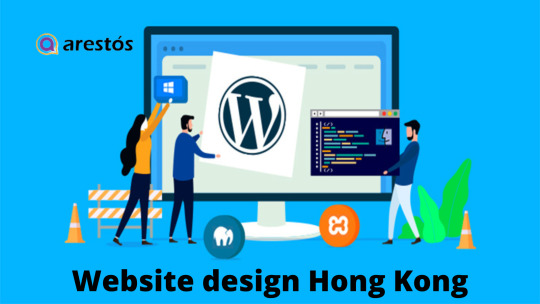
Why Do You Need Web Design Services?
You should value your website. But building a website is not an easy task. An excellent site designer is aware of the limitations of visually appealing graphic design. In the competitive and fast-paced market of Hong Kong, it is challenging to stand out. Hong Kong consumers are constantly searching for the newest and greatest products. To keep up with the trends, creativity and knowledge are needed. Enhancing your website's design can speed up your company's profitability through careful planning and successfully carrying out your vision.
Top 4 Hong Kong web design company 2022:
The most prestigious Hong Kong web design company Arestós:
As an ERP Consulting & Software Developer, Arestós offer full digital company solutions, such as corporate website design, e-commerce website development, and specialized business management software. Arestós are committed to using bespoke and reliable digital solutions to assist organizations in overcoming obstacles and maximizing their potential.
Arestós create enterprise software, corporate websites, e-commerce development, and application development as our digital business solutions to unleash growth.
Arestós offers skilled and knowledgeable website advisors, WordPress specialists, web designers, and developers for a variety of design and construct website services. Arestós is dedicated to assisting you in establishing and growing your online brand presence.
To establish a presence in the market, Arestós helps businesses, small and medium-sized businesses, and entrepreneurs with their branding. In our opinion, maintaining high standards of work and effective time management are crucial to offering our valued clients the finest services available. Arestós uses cutting-edge technology to assist locals in coping with the rapid change brought on by the digital age.
Excellent Webworld
Excellent Webworld offer cutting-edge tech solutions in addition to attractive websites and passable apps, and Excellent Webworld aim to not only impress but also wow you with our work. Let technology be your stepping stone to success, and we'll be its architects.
An international IoT, web, and mobile app development company with offices all around the world is called Excellent Webworld. Through our products and solutions, Excellent Webworld hope to improve the user experience while adding value and making a difference. Since a long time ago, Excellent Webworld have been enhancing the digital world and bringing joy to people, one project at a time. Our products have an influence on the consumers thanks to human-centered design and development. Our solutions are meant to guide businesses through unfamiliar waters as they hasten their time to market and assist them in making wise choices. For a number of industries, including retail, finance, entertainment, education, and healthcare among others, Excellent Webworld offers online and mobile application development, enterprise product consulting, and software development services.
Excellent Webworld firmly believe that one person can affect global change, and the unique perspectives and skills of each of our employees help us develop world-class software. Therefore, everyone involved in creating our solutions, from marketing and sales to designing and delivering the greatest digital products for our clients, not only the developers. Each employee's work represents the culture of our firm. Together with our clients, our developers create outstanding digital experiences that improve the human race. Excellent Webworld create brands in addition to apps.
Hong Kong web design company: Visible One
Visible One is a Hong Kong-based website design company that was founded in 2008. By utilizing a digital marketing strategy, they specialize in areas such as eCommerce web design, content management systems (CMS), search engine optimization (SEO), search engine marketing (SEM), social media marketing, graphic design, and more.
Visible One offers complimentary Search Engine Optimization (SEO) services for digital marketing that will improve Facebook marketing, display advertising, Google pay-per-click advertising, and more. To launch your company's online branding, Visible One offers website development services. both offline and online visibility They can help your website become more visible by helping you move up the Google Search Engines. Make yourself easier to find by your clients!
First page: Professional Hong Kong web design company
Hong Kong's leading full-service digital agency is called First Page. Team is made up of experts in strategy, technology, and creativity who get a kick out of helping businesses of all stripes succeed online. Work, which is completed right here in Hong Kong, is supported by our robust internal software, which enables us to thoroughly analyze the requirements of clients and carry out specialized, data-driven campaigns that produce quantifiable outcomes. Web design and development, SEO, social media marketing, and pay-per-click advertising are all part of our portfolio of services that aim to provide the highly desired leads, sales, and profits. First Page are supported by a global network of offices in Australia, Dubai, Thailand, Singapore, and New Zealand, so they can stay on top of the most recent developments in digital marketing.
Conclusion
The article on Arestós has shown you 4 hong kong web design companies and why you should use that service.
In addition to our web design business, Arestós provides digital strategy consulting, e-commerce, web development, technical SEO, and performance marketing to Hong Kong's most well-known firms.
0 notes
Text
Web development cost in 2022: The Complete Guide
There's no denying that a great website can help your company grow. Making great first impressions can help you improve customer retention and drive more sales.
We are all aware that websites are one of the most effective marketing channels available to all businesses. In fact, one is owned by 64% of all small businesses.
So the question is no longer whether you need a website, but rather how much it will Web development cost that meets your business needs.
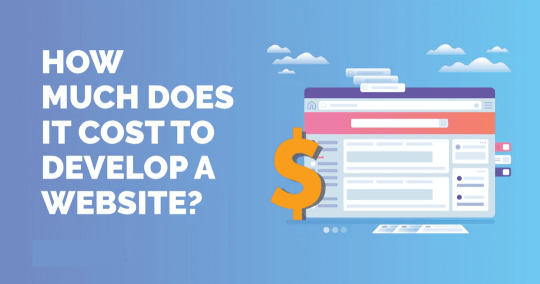
Why is it Difficult to Estimate the Web Development Cost?
This is the most frequently asked question we receive from entrepreneurs all over the world: why is calculating the cost of creating a website so difficult?
You can find ballpark figures on the Internet, but these estimates ultimately fail to grasp all of the concepts of creating a website, as well as the complexities of such an endeavor.
So, why is it so difficult to estimate the cost of website development? Consider the following analogy.
Assume you're building your dream home and you're wondering, "How much does it cost to build a house?" The cost will vary depending on the type of house, neighborhood, layout, total floor area, number of rooms, outdoor space, interior and exterior finish, and other factors. The same is true for web design.
So, how much will website development cost in 2022? The answer will be determined by a variety of factors.
But don't worry, we've made it simple to estimate the cost of developing a website. In this article, we will go over various factors that you will need to estimate properly.
Before we begin, consider some baseline statistics that estimate the average website development cost in the United States.
How Much Does it Cost to Build a Website: The Estimations
According to research, the average cost of building a website often ranges from $1,000 (for a small business website) to $95,000 and more (for a complex custom website).
The cost could be less than $1,000 or more than $10,000 to build a website for a small business in terms of the actual overall cost. (Source)
To create a typical website, depending on your needs, you might need to spend anywhere between $100 and $500. The price of a custom feature-rich website can go as high as $30,000 or more (Source)
The price can be between $2,500 and $95,000 to build a website. To develop a complex custom website, you might have to shell out even more. (Source)
To create a site, the upfront cost, which includes launching and designing it, is $12,000 to $150,000, while routine website maintenance ranges from $35 to $5000 per month—or $400 to $60,000 per year. (Source)
Based on the above data, it is clear that there are various factors that influence the final cost of website development. Let's see some of the factors that affect the actual website development cost.
Factors that Determine the Website Development Cost
Some of the significant factors that determine the average cost to build a custom website include:
Factors by types and purpose
Factors by phases
Essential factors
Let’s discuss each of these factors in detail.
Arestós is a Hong Kong based web design and development. We offer full services from designing stunning responsive websites to optimize your WordPress SEO. Feel free to contact us for free consultancy on how to plan, build, and launch your WordPress website with a tailored SEO strategy.
1 note
·
View note